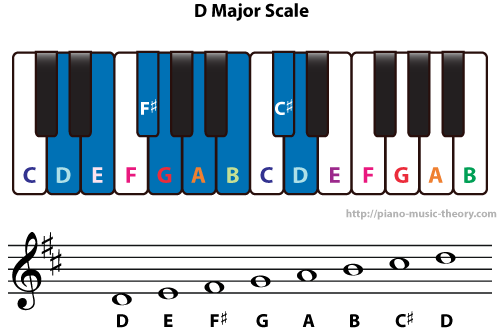
Most of them have the same fingerings, and they all start on white keys.īlack key scales are like a whole new “course” if you will. Think of those like the “prerequisite” scales. Wait! Before you keep reading, we need to talk about prerequisities.īlack key scales are not the easiest things to learn, so it is important that you have already mastered all your white key scales before continuing. I’ll show you diagrams and sheet music with these notes as you read on. The notes in a Db scale are as follows: Db, Eb, F, Gb, Ab, Bb, and finally C. The Db scale uses all 5 black notes just like the B scale…but this time all the black keys are flats, not sharps! We’ll get into more about that soon. The Db scale, simply put, is a major scale that both starts and ends on the note “D flat.” It follows the typical pattern of half steps and whole steps that builds a major scale. Today I’m going to teach you everything you need to know about the Db scale, including the notes, fingerings, and more tips! What is the Db scale in piano? The specific note names will change depending on the key of the scale, for example a Bb Major scale or an F# Major scale, but the sequence of Whole-steps and Half-steps will remain the same.The D Flat piano scale may have 5 flats, but it is still a great scale to start off with when you’re learning black key scales. The following symbols are called accidentals:Ī major scale varies between half steps and whole steps (2 half steps). Playing every note in the chosen octave (for this example, we'll stay with C4 to C5) is called a chromatic scale. Each note is one half step away from the previous note and the following note. Half steps are also known as semitones or half tones and are the smallest musical interval in Western tonal music. For example, C4 (Middle C) to C5 (up 1 register). One way to think about constructing a major scale is to keep in mind that every scale has twelve potential Intervals (distance between notes) in each octave, which is the distance from one note to the same note in the next register (either higher or lower).
#Second notes on the d scale how to
Refer to how to determine key signatures to learn more about this method. This is a more advanced method and requires lots more musical theory background. Then figure out what notes are sharp or flat in the major key signature, and apply that to the notes. Then write 7 more notes, each note a second away (they should all be right next to each other). To use this method first write all of the notes out on your staff paper (don't use any accidentals except for your first note), starting with the first note of the major scale (scale degree 1).

Starting with F# as scale degree 1, scale degree 2 is a major second away, G#, scale degree 3 is another major second away A#, and so on.įinally, if you understand all of these and want a quick way to write major scales you can think about the number of sharps and flats in the Major key signature. The process for building goes the same as above. This method is superior because it translates to all instruments and is describes how you would write the notes on staff paper. The pattern to build scales with this is MMmMMMm. The better way to think about a major scale is using Major 2nds (M2) and Minor 2nds (m2). Scale degree 2 would be F a whole step away. this pattern is the same, if you start on a note like Eb as scale degree 1. Continue adding notes until you have 8 scale degrees.

Scale degree 4 is F which is a half step up. Scale degree 3 is E another whole step up. The pattern WWHScale Degree 2 would be a whole step up, which is D. (This method has draw backs and can be confusing for people who do not know piano, whole steps refer to note spacing on the piano) This method is used by much just learning Theory. The first method is to use whole steps (W) (Like between C and D on the piano) and Half steps (H) (Like between E and F on the piano). There are several ways to think about constructing a major scale.


 0 kommentar(er)
0 kommentar(er)
